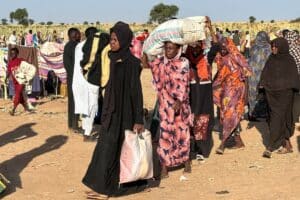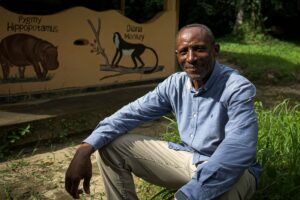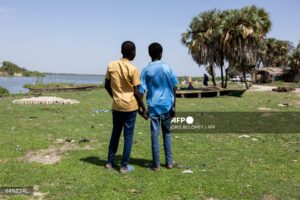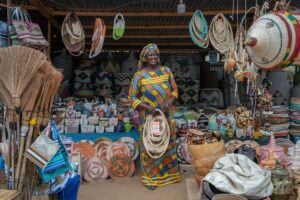Volunteers blocked by the authorities, lack of external aid, complicated weather: one month after the earthquake that killed more than 50,000 people in Syria and Turkey, NGOs tell of the “chaotic” conditions on the ground in the early days of the disaster.
Present in the northwest of war-torn Syria, Handicap International could only count on itself in the hours following the 7.8 magnitude earthquake of February 6,” explains Myriam Abord-Hugon, director of the NGO’s Syria program.
First, because her local team, composed of about a hundred people living in Syria, was itself affected by the earthquake and its many aftershocks.
“We spent the first few hours making numerous calls to count our numbers. When we saw that one person was missing and that his house had been destroyed, it was frightening,” says Myriam Abord-Hugon, saddened that she was found dead under the rubble three days later.
However, the rescue teams deployed on site found themselves unable to intervene in the debris of the buildings under which the victims were located.
This was due to the “immensity of the disaster”, which according to UN estimates generated up to 210 million tons of rubble in both countries, notes the official, as well as a lack of equipment, including bulldozers.
The inability to receive reinforcements and materials from outside the country has significantly “limited things” for humanitarian teams in this landlocked rebel area of Syria, whose only then-open border crossing with Turkey, Bab al-Hawa, was damaged during the quake.
“Even though hospitals were used to dealing with polytrauma patients following a collapse during the war, they were overwhelmed by the number of people injured in the earthquake,” notes Myriam Abord-Hugon.
In Turkey, where international aid began to arrive the day after the earthquake, some volunteers found themselves immobilized by the local authorities.
This was the case for a particularly crucial 12 hours at Kahramanmaras airport, in the south-east of the country, says Ezgi Karakus, an NGO volunteer on the ground.
– Hasty return –
“Our team leader had to requisition a municipal bus so that we could get to Islahiye after 24 hours,” she recalls.
The volunteer deplores the fact that NGOs have been forced to operate only in areas designated by Afad, the Turkish governmental authority in charge of emergency situations.
John Diksa, president of the emergency aid association SOS Attitude, was able to distribute emergency supplies (tents, sleeping bags, blankets) to villages in the Elbistan region, near the epicenter of the second earthquake that struck Turkey on February 6, thanks to Afad.
But his team was initially faced with complicated weather conditions.
“It was between -15 and -20 degrees at night, and it took almost five hours to walk just five kilometers because of the snow,” the volunteer details.
It was only during his second week on the ground, in the agricultural region of Pazarcik, that things “became more complicated” for SOS Attitude, after the sudden requisition by the Turkish army, gendarmerie and police of the local aid distribution center and the eviction of all its volunteers.
Deprived of its operational base, in the midst of negotiations with customs to recover equipment blocked at the port of Mersin, the association had to rush back to France because of a mechanical problem with its car, which prevented it from continuing its field work.
One month after the disaster, John Diksa is preparing to go back to Turkey to continue his efforts to help the refugees with their housing, “their greatest need at the moment”, while Ezgi Karakus is worried about the “major hygiene problems” caused by the lack of water in the disaster areas.
In Syria, where cross-border crossing points with Turkey were temporarily opened by the authorities in mid-February, Handicap International is now focusing its efforts on the psychological support and physical rehabilitation of survivors.
With a clear objective, underlines Myriam Abord-Hugon: “to prevent their injuries from becoming permanent handicaps”.
© Agence France-Presse





